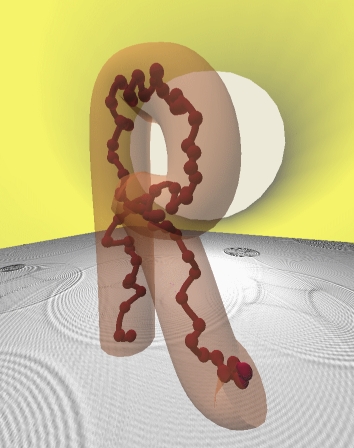TTS Theories¶
Williams-Landel-Ferry TTS Shift¶
Summary¶
Description¶
Time-temperature superposition based on a WLF equation with two parameters. Temperature \(T\) of the data is read from the file. The temperature to which the data is shifted is specified by \(T_r\). This theory shifts many samples simultaneously with the same shift factors which follow exactly the WLF equation. Thus, if there is one temperature for which the data is out of line with the others, the theory does not try to hide it by using an arbitrary shifting - instead the shifted data will clearly show that one of the temperatures went wrong. Also, the vertical shifts are applied according to the density change only, whereas in other rheometer software some loading errors are hidden into the vertical shifts.
In the horizontal shift, the frequency is modified according to:
with
where \(B_1\) and \(B_2\) are material parameters.
Warning
The equation and parameters are different with respect to the standard WLF definition. In the WLF equation, the values of the parameters \(C_1\) and \(C_2\) depend on the reference temperature \(T_r\) to which the data is being shifted.
The parameters \(B_1\) and \(B_2\) do not depend on the choice of \(T_r\) and thus are true material parameters.
The values the standard parameters \(C_1\) and \(C_2\) can be easily calculated from the values of \(B_1\) and \(B_2\) using the following expressions:
Similarly, the values of the parameters \(B_1\) and \(B_2\) can be easily calculated from the values of \(C_1\) and \(C_2\) from the literature using the following expressions:
Everytime RepTate calculates or fits the theory to a set of experimental data, it will output the values of the standard WLF parameters \(C_1\) and \(C_2\) at the temperature \(T_r\) in the theory window.
In the vertical shift, the modulus is modified according to the expression:
with
where \(\alpha\) thermal expansion coefficient of the polymer at 0 °C.
The molecular weight dependence of \(T_g\) must be considered when shift data of very short chains or very broad molecular weight distributions containing a significative fraction of short chains. This change is roughly related to the amount of free ends present in the sample. In order to take the effect into account, we use the following phenomenological expression, which was shown to fit the experimental data:
A simple chain ends argument leads to the same expression with \(M_n\) instead of \(M_w\) (here, we are assuming that \(M_w \approx M_n\)). This leads to the following modified expression for the horizontal shift:
In most cases, when shifting the data of well entangled monodisperse polymers, this effect can be discarded by unticking the corresponding check box in the theory window.
Warning
Try to shift simultaneously different samples of the same material, using the suggested values of the fitting parameters from the Materials Database or taking them from the literature.
Warning
Load all the *.osc files in the same dataset.
Warning
It is important to start the fit from reasonable values of the parameters \(B_1\) and \(B_2\). Otherwise, the minisation procedure will produce wrong results.
Automatic TTS Shift¶
Summary¶
Description¶
This theory attempts to perform an automatic Time-temperature superposition shift of experimental data without assuming any preconceived behaviour.
When a dataset is loaded, the program creates a database of the datafiles according the molecular weight \(M_w\) and the volume fraction \(\phi\) of the samples in the file. Then, it allows the user to select the temperature to which he or she wants to shift the data (from a dropdown box). The list of allowed values of temperature is limited to those values of \(T\) that are present in all the different samples loaded in the datafile.
The fitting procedure goes sample by sample, starting from the file that is at the selected reference temperature. Then, it walks over the other files of the same sample, in ascending order of the difference between their temperature and the reference temperature, and finds the right horizontal and vertical shift factors so that the overlap between each file and the previously shifted files is optimal. For each file, the program stores the optimal shift factors.
Once the procedure is over, the theory output window will show a list of the samples and, for each one, will output the temperature of each file and the corresponding optimal shift factors. For the time being, the user will have to copy this data and use it externally in order to extract the temperature dependence of the shift factors (WLF, Arrhenius or any other). In the future, we may implement a new application within RepTate to interpret and fit those data.
Warning
Try to shift simultaneously different samples of the same material.
Warning
Load all the *.osc files in the same dataset.
Warning
The theory is in beta state. It may fail if there is a large number of files to shift. If that happens, inspect the data files and search for files that contain corrupt data or data that is impossible to fit to the data in other files of the same sample. If the error persists, try to fit a reduced number of files.
